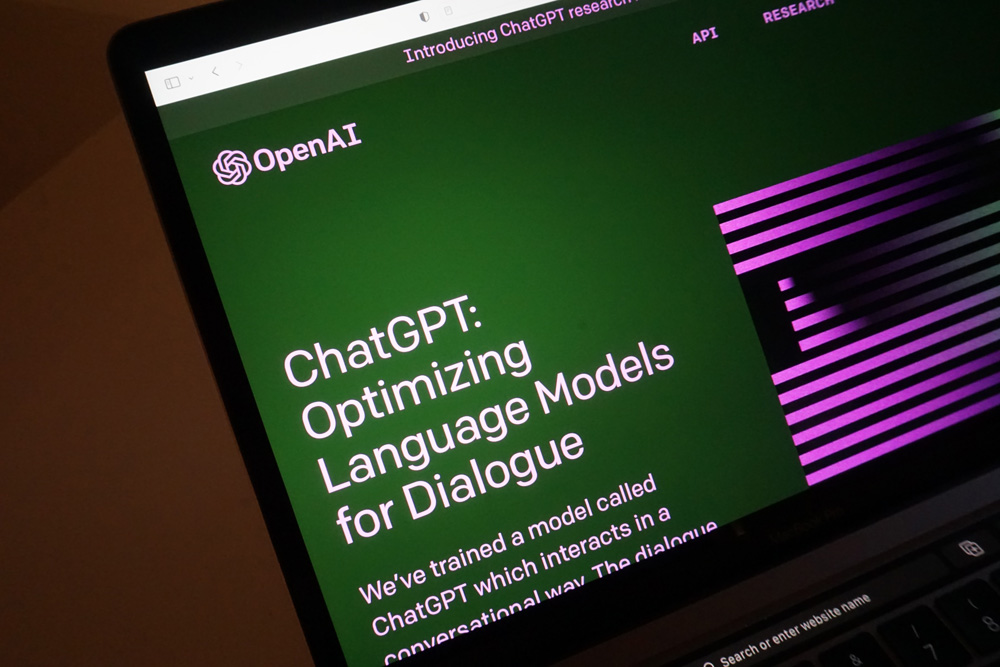What Communicators Need to Know About ChatGPT

Let’s explore the AI tool that has captured the attention of the communications industry: ChatGPT. If your LinkedIn feed has looked anything like ours lately, you’re probably already overloaded with information (and have probably established your own opinion) on the latest OpenAI tool. We want to weigh in on the conversation and share what we believe to be the most suitable scenarios to use ChatGPT, as well as the potential downfalls of the tool. While we won’t be getting into every aspect of its functions, we will be discussing the main features that we’ve seen circulating in our industry discussions. One thing we likely all feel is while we knew AI like this was going to one day exist, it’s both exciting and unsettling to be unaware of how this will affect the future of our roles and industry.
What is ChatGPT?
ChatGPT is an AI-driven language processing tool that allows users to interact in a conversational way. Its dialogue format permits users to ask questions resulting in the ability for ChatGPT to “answer followup questions, admit its mistakes, challenge incorrect premises, and reject inappropriate requests.” The communications industry has raved about its ability to assist with tasks such as composing emails, copywriting, analyzing audience data and writing code.

Suitability and benefits
ChatGPT is a tool with a plethora of extraordinarily useful and convenient ways to enhance the overall quality of your content. For our industry, audience and media monitoring, content creation and project management tasks are areas where ChatGPT may be incredibly useful to us. ChatGPT is able to efficiently monitor audience and media data by using its capabilities to analyze and communicate relevancies through its dialogue. Because it can handle large amounts of data at one time, a lot of strategic time (and money) is saved and in some cases the AI can help us advance analytical practices as it will often notice patterns and trends that we may have otherwise missed. ChatGPT can also help with enhancing content creation. For instance, the chatbot can generate content ideas for anything from press releases to social media posts, or edit and proofread your own ideas. It can help spark inspiration and speed up the content creation process. Additionally, you can streamline time-consuming project management tasks by having ChatGPT assist you. It can help you craft emails, summarize meeting notes and document procedures. While all these impressive functions can help save us valuable time, it’s important to remain vigilant about all the information you receive from ChatGPT before putting it to use.

Dangers and downfalls
We all know that no AI tool comes without inevitable dangers and downfalls–and ChatGPT has already raised concerns for many in the industry. In particular, we’re seeing lots of conversations about the risk ChatGPT poses to making certain marketing positions such as copywriters and data analysts obsolete. However, there are limitations to ChatGPT that lead us to believe this fear will never become a reality. The primary reason we can know that ChatGPT isn’t replacing anyone (anytime soon, that is) is that it’s unable to do real work. While it’s masterful at generating answers, the user still needs to be able to distinguish that answer from a good or bad one because it will always generate an answer for you (Whether it understands your request or not). OpenAI itself noted that ChatGPT sometimes writes “plausible-sounding but incorrect or nonsensical answers.” Additionally, what is arguably the tool’s biggest limitation is its data currently only spans to the year 2021. A big misconception about ChatGPT is that it has the ability to search the internet for information, but in reality, it can only respond using data it learned from training which means it can’t provide you with sources for the information given — leaving ample room for error. Even when using the tool, it states “My responses are not intended to be taken as fact, and I always encourage people to verify any information they receive from me or any other source.” For this reason, it’s a crucial practice to ensure you are fact-checking all the information you’re given.
There remains a lot to learn about ChatGPT and it will undoubtedly continue to advance and evolve over the next several years and impact our industry even further. We are eager to continue learning about how AI will transform our industry in the next several years. I’ll leave you with a final thought to consider from @svpino on Twitter — “AI will not replace you. A person using AI will.”